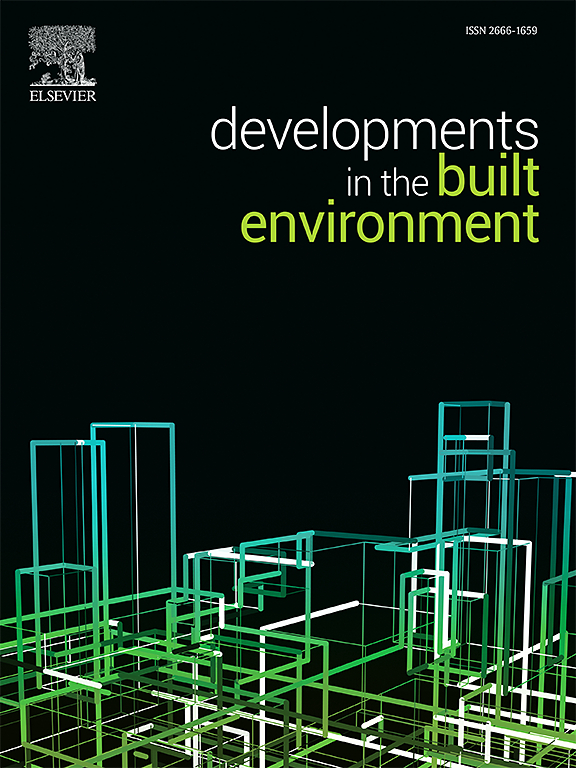基础设施项目中移动装配厂搬迁策略的环境和经济优化
IF 8.2
2区 工程技术
Q1 CONSTRUCTION & BUILDING TECHNOLOGY
引用次数: 0
摘要
移动非现场预制可以增强复杂的线性基础设施项目,但缺乏一般和强大的搬迁规则限制了其在建筑行业的实际实施。本研究提出一种结合生命周期评估与地理资讯系统的整合模型,以优化三层移动供应网路。一项超级高铁基础设施案例研究表明,与固定设施相比,将气动移动工厂搬迁四次可减少62%的碳排放和49%的成本,这主要是由于其缩短了出站运输距离。基于场景的敏感性分析证实了移动工厂提供各种项目的适应性,并建议每50-80公里搬迁一次工厂,以平衡可持续性和实际可行性。虽然工厂重组的直接影响不大,但它们是防止不切实际的搬迁数量的必要约束。该模型为大型基础设施建设中移动预制工厂可持续搬迁策略的制定提供了实践指导。本文章由计算机程序翻译,如有差异,请以英文原文为准。
Environmental and economic optimization of relocation strategies for mobile prefabrication factories in infrastructure projects
Mobile off-site prefabrication can enhance complex linear infrastructure projects, yet the absence of a general and robust relocation rule limits its practical implementation in the construction industry. This research proposes an integrated model that combines Life Cycle Assessment and Geographic Information Systems to optimize a three-layer mobile supply network. A hyperloop infrastructure case study demonstrates that relocating a pneumatic mobile factory four times reduces carbon emissions by 62 % and costs by 49 % compared to a stationary facility, primarily due to shortened outbound transportation distances. Scenarios-based sensitivity analyses confirm the adaptability of mobile factories to supply diverse projects and recommend relocating the factory every 50–80 km to balance sustainability and practical feasibility. Although direct impacts from factory reconfigurations are modest, they serve as necessary constraints to prevent impractical relocation numbers. The model offers practical guidance for developing sustainable relocation strategies for mobile prefabrication factories used in large-scale infrastructure construction.
求助全文
通过发布文献求助,成功后即可免费获取论文全文。
去求助
来源期刊

Developments in the Built Environment
Multiple-
CiteScore
7.40
自引率
1.20%
发文量
31
审稿时长
22 days
期刊介绍:
Developments in the Built Environment (DIBE) is a recently established peer-reviewed gold open access journal, ensuring that all accepted articles are permanently and freely accessible. Focused on civil engineering and the built environment, DIBE publishes original papers and short communications. Encompassing topics such as construction materials and building sustainability, the journal adopts a holistic approach with the aim of benefiting the community.
 求助内容:
求助内容: 应助结果提醒方式:
应助结果提醒方式:


